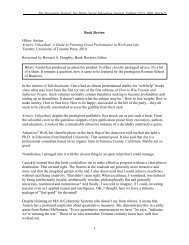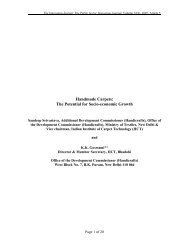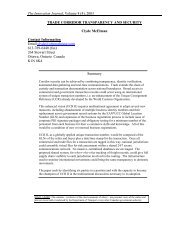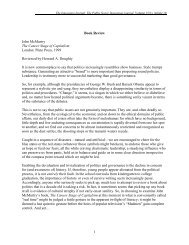The Followership Continuum - The Innovation Journal
The Followership Continuum - The Innovation Journal
The Followership Continuum - The Innovation Journal
Create successful ePaper yourself
Turn your PDF publications into a flip-book with our unique Google optimized e-Paper software.
We have all had experiences in which we were urged to be a leader: “Don’t just follow along,<br />
think for yourself.” Reproaches such as this one are replayed over and over and are part of our<br />
repeating mental film. <strong>The</strong> reality is that our perceptions about followers and followership are<br />
grounded in positioning. And for many, our mental reruns have positioned followers as being<br />
second best.<br />
Consider the mental positioning of the General Electric Company products. Many of us perceive<br />
electrical appliances as this company’s primary products, possibly encompassing related or<br />
vertical electrical product lines. But, in reality the General Electric Company is a conglomerate,<br />
with horizontal product lines that span many industries, including ownership of NBC, a<br />
television network, and insurance and financial institutions. Likewise, followership is positioned<br />
as a passive role that is dependent on the directions and actions of another--a superior, the leader.<br />
Like General Electric, the reality for followers is different, as well.<br />
In actuality, followership is a relationship between followers and leaders, one of co-dependent<br />
roles rather then dependent ones.<br />
Philosophically, from childhood, our focus has been on being a leader and has been directed<br />
away from the importance of followers. Maybe this one-sided focus has resulted in the<br />
undervaluing of followership. Yet no organized effort can succeed or be sustained without<br />
followers. Without military followers, brigades or platoons couldn’t accomplish their missions.<br />
How would religions grow and be sustained, if parishioners and disciples didn’t follow? And<br />
just imagine the Super Bowl without a team of followers. Who would receive and carry the ball;<br />
who would block; and who would kick or punt, if everyone coached? Each of these team<br />
members provide critical, but different, expertise. Success in these organized efforts occurs from<br />
the combined efforts of many people working together. <strong>The</strong> contribution of followers to<br />
organizational productivity is irrefutable; the case is strong for the importance of followership in<br />
organizations.<br />
Traditions of <strong>Followership</strong>- Certain activities within institutions provide clear examples that<br />
reveal the integral relationship between the followers and the productivity of organized efforts.<br />
<strong>The</strong>se institutions have followership as the cornerstone of their foundation; they have long<br />
standing traditions of followership. <strong>The</strong>y have perfected the art of followership. <strong>The</strong> traditional<br />
fields of religion, military, politics, and team sports represent these key followership cornerstone<br />
institutions. <strong>The</strong> information depicted in Table 1 which follows summarizes the followership<br />
precepts on which these organized systems endure:<br />
3
















